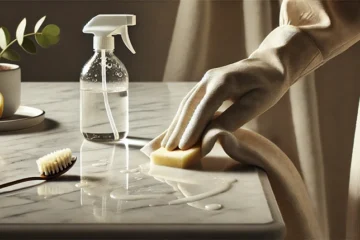Simple Steps for Fixing a Faulty Sliding Screen Door

Sliding screen doors are a convenient way to enjoy fresh air while keeping insects out. But over time, these doors can become faulty, making it difficult to slide them smoothly. Whether it’s due to worn-out rollers, bent tracks, or simple misalignment, a sliding screen door that doesn’t function properly can be a real hassle. Luckily, fixing a faulty sliding screen door is something you can do with a few basic tools and some simple steps. In this guide, we’ll take a closer look at how you can get your door sliding smoothly again.
What Are Common Issues with Sliding Screen Doors?
If your sliding screen door isn’t gliding as smoothly as it once did, you’re not alone. There are several common issues homeowners face with these doors, which can usually be fixed with a bit of elbow grease. Here are a few common problems:
- Worn-out or damaged rollers
- Dirty or clogged tracks
- Misaligned door frame
- Bent or damaged door tracks
- Screen mesh coming loose
These issues can make your screen door harder to open and close, causing frustration and potentially leading to further damage if left unchecked. Let’s dive into the steps you can take to fix each of these problems.
How to Clean and Lubricate the Door Track
A dirty or clogged track is one of the easiest issues to fix. Over time, dirt, dust, and debris can accumulate in the door track, preventing the rollers from moving smoothly. Here’s how you can clean and lubricate the track to ensure the door glides effortlessly:
Step 1: Remove the Door
Most sliding screen doors can be lifted off their tracks. To remove the door, simply lift it upwards until the bottom rollers are clear of the track, and then pull the door out towards you. Set the door aside carefully to avoid damaging the frame or screen.
Step 2: Clean the Track
With the door removed, use a vacuum or a brush to clear out any dirt, leaves, or debris from the track. For stubborn dirt, you can use a damp cloth or a mild detergent solution to scrub the track clean. Be sure to dry the track thoroughly after cleaning.
Step 3: Lubricate the Track
Once the track is clean, apply a silicone-based lubricant to the length of the track. Avoid using oil-based lubricants, as they can attract more dirt and debris. The silicone spray will help the rollers glide smoothly without collecting grime.
Helpful Hint:
If you don’t have a silicone lubricant on hand, you can use paraffin wax or a bar of soap to coat the track. Just rub it along the length of the track for a smooth finish.
How to Replace Worn-Out or Damaged Rollers
If your sliding screen door still doesn’t glide smoothly after cleaning the track, the rollers might be worn out or damaged. Here’s how you can replace them:
Step 1: Remove the Rollers
With the door off the track, locate the rollers at the bottom of the door. Depending on the model, the rollers may be secured with screws. Use a screwdriver to remove the screws and take out the damaged rollers.
Step 2: Purchase Replacement Rollers
Take the old rollers to your local hardware store to find a suitable replacement. You’ll want to ensure the new rollers match the size and style of your existing ones for proper alignment.
Step 3: Install the New Rollers
Once you have the new rollers, insert them into the slots at the bottom of the door and secure them with screws. Make sure the rollers are aligned correctly so they can glide smoothly on the track.
Step 4: Reinstall the Door
With the new rollers in place, lift the door back onto the track, ensuring the rollers sit properly on the bottom track. Test the door to ensure it slides smoothly. If it still feels stiff, you may need to adjust the roller height using the adjustment screws located at the bottom of the door frame.
Common Tools Needed for Sliding Screen Door Repairs
| Tool | Purpose |
|---|---|
| Flathead Screwdriver | Removing rollers and splines |
| Phillips Screwdriver | Adjusting or securing screws on rollers and frames |
| Spline Roller | Installing or removing the spline during screen replacement |
| Utility Knife | Trimming excess screen mesh |
| Rubber Mallet | Straightening bent tracks or frames without causing damage |
| Silicone Lubricant | Ensuring smooth sliding action of the door |
How to Fix a Bent or Damaged Track
A bent or damaged track can prevent your sliding screen door from gliding smoothly, no matter how clean or well-lubricated it is. Here’s how to fix it:
Step 1: Identify the Bent Section
Examine the length of the track to locate any bends or dents. These are often caused by heavy impacts or prolonged use, especially in high-traffic areas.
Step 2: Straighten the Track
Use a pair of pliers to gently straighten any bent sections of the track. For more severe damage, you may need to use a rubber mallet to tap the track back into shape. Be sure to work slowly and carefully to avoid causing further damage.
Step 3: Replace the Track if Necessary
If the track is severely damaged and cannot be repaired, you may need to replace it entirely. Measure the length of the track and purchase a replacement from your local hardware store. Follow the manufacturer’s instructions to remove the old track and install the new one.
How to Realign a Misaligned Sliding Screen Door
Over time, your sliding screen door can become misaligned, making it difficult to open and close. If your door feels crooked or uneven, here’s how you can realign it:
Step 1: Check the Roller Adjustment Screws
Most sliding screen doors have adjustment screws located at the bottom of the frame. These screws control the height of the rollers. Use a screwdriver to adjust the height of the rollers until the door sits evenly on the track.
Step 2: Test the Alignment
Once you’ve adjusted the rollers, test the door to see if it glides smoothly. If it still feels uneven, continue adjusting the screws until the door is properly aligned.
Step 3: Inspect the Door Frame
If adjusting the rollers doesn’t solve the problem, the door frame itself might be warped or damaged. Check for any signs of warping, and if necessary, use shims to adjust the frame’s alignment.
How to Repair or Replace the Screen Mesh
If your sliding screen door has a torn or loose screen mesh, it can defeat the purpose of having a screen door in the first place—keeping bugs out. Here’s how to repair or replace the screen mesh to restore the door’s functionality.
Step 1: Remove the Screen Door from the Frame
As with other repairs, you’ll need to remove the door from its track. Lift the door upwards and carefully pull it out from the bottom. Lay the door flat on a surface, preferably outdoors or in a garage where you have plenty of room to work.
Step 2: Remove the Old Screen
Once the door is removed, locate the spline, which is the rubber strip that holds the screen in place. Using a flathead screwdriver or a spline tool, carefully pry out the spline from around the frame. As you remove the spline, the old screen mesh should come loose. Discard the old mesh.
Step 3: Measure and Cut the New Screen
Purchase a replacement screen mesh from your local hardware store. Fiberglass and aluminum are common materials used for screen mesh, with fiberglass being easier to work with for beginners. Measure the door frame and cut the new mesh to size, leaving about 1-2 inches of excess mesh around the edges for easier installation.
Step 4: Install the New Screen
Place the new screen over the door frame, ensuring it covers the entire opening. Starting at one corner, use a spline roller to press the spline and mesh into the groove of the frame. Work your way around the door, keeping the mesh taut as you go to prevent wrinkles or sagging. Once the spline is in place, trim off the excess mesh using a utility knife.
Step 5: Reinstall the Door
After the new screen is securely in place, reinstall the sliding door onto its track. Test the door to ensure it slides smoothly and that the new screen is securely held in place.
Helpful Hint:
When cutting the new screen, avoid cutting it too close to the spline. Always leave a little extra mesh around the edges—you can trim the excess after the spline is fully installed to get a clean, professional look.
Preventative Maintenance for Your Sliding Screen Door
Once you’ve gone through the effort of fixing your sliding screen door, you’ll want to keep it in good shape to avoid dealing with the same problems again in the near future. Regular maintenance can go a long way in preventing wear and tear, and here are some simple steps you can take to keep your sliding screen door functioning smoothly:
1. Clean the Track Regularly
Dirt and debris are the main culprits behind a sticky sliding screen door. To prevent this, make a habit of cleaning the track every few months. A vacuum cleaner or brush can be used to remove surface dirt, and for tougher buildup, a damp cloth or mild detergent works well.
2. Lubricate the Track
After cleaning, apply a silicone-based lubricant to the track to keep the door gliding smoothly. Regular lubrication will reduce friction and prolong the lifespan of the rollers.
3. Check and Adjust Rollers
If you notice the door becoming harder to slide again, inspect the rollers. Tighten or adjust them as needed to maintain smooth operation. Most screen door rollers can be easily adjusted with a screwdriver.
4. Inspect the Screen for Damage
Keep an eye on the screen mesh for any tears or loosening. Small holes can be patched with a screen repair kit, while larger damage might require a full screen replacement. Fixing damage promptly will prevent it from getting worse.
When Should You Replace the Entire Door?
In some cases, fixing individual components of your sliding screen door might not be enough. If the frame is warped or the door has extensive damage, it may be time to replace the entire door. Here are a few signs that indicate a full replacement is the best option:
- The frame is bent or warped, causing misalignment that can’t be fixed with roller adjustments.
- The rollers or track are severely damaged and no longer glide smoothly, even after multiple repairs.
- The screen mesh is torn beyond simple patching, and the frame isn’t sturdy enough to hold a new mesh securely.
- You’ve attempted several repairs, but the door continues to cause problems and doesn’t function properly.
Replacing a sliding screen door is usually straightforward and can often be done using a pre-hung door kit available at most hardware stores. Measure your existing door frame carefully before purchasing a new one to ensure a proper fit.
FAQs
Wrapping Up
Fixing a faulty sliding screen door doesn’t have to be a daunting task. By following simple steps like cleaning the track, replacing worn-out rollers, or repairing the screen mesh, you can restore the smooth operation of your door in no time. Regular maintenance, such as keeping the tracks clean and lubricated, can also prevent future issues, extending the life of your door. Whether you’re dealing with a bent frame or misaligned rollers, taking the time to address these common problems can save you money and hassle down the road. If the door becomes too damaged for repair, consider a replacement to keep your space functional and comfortable. With these tips, you’ll keep your sliding screen door in great condition for years to come.


